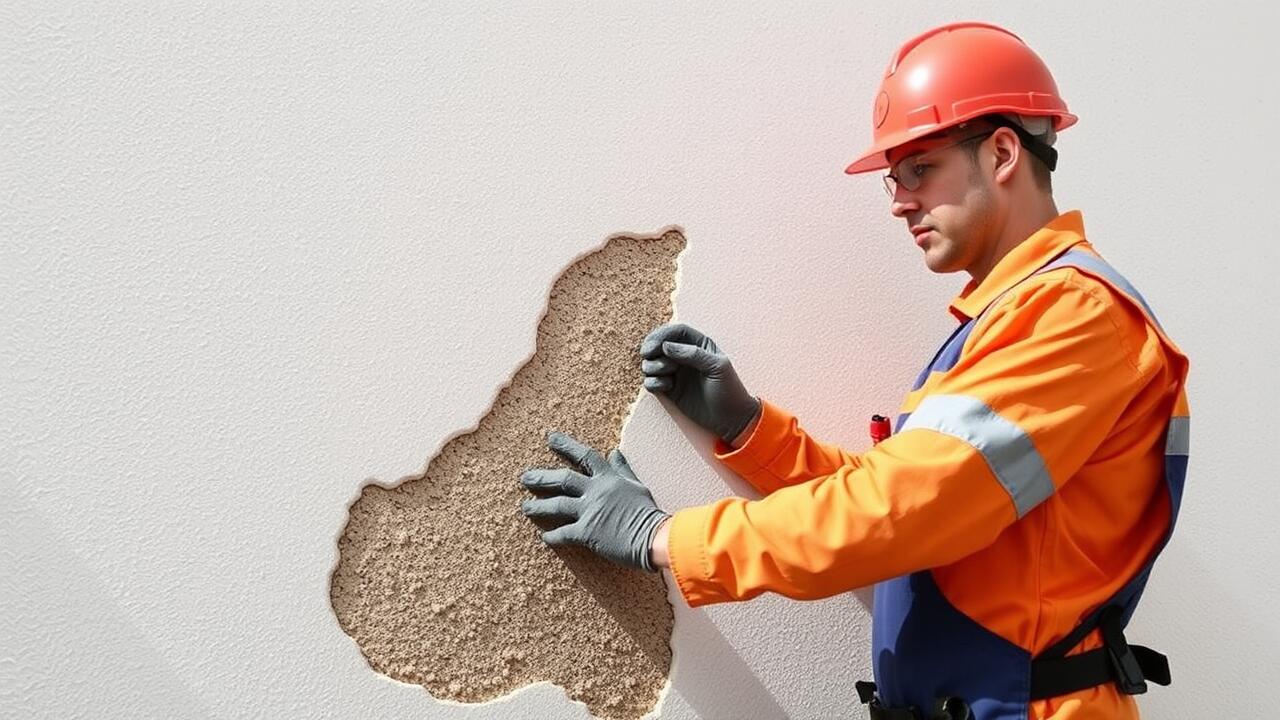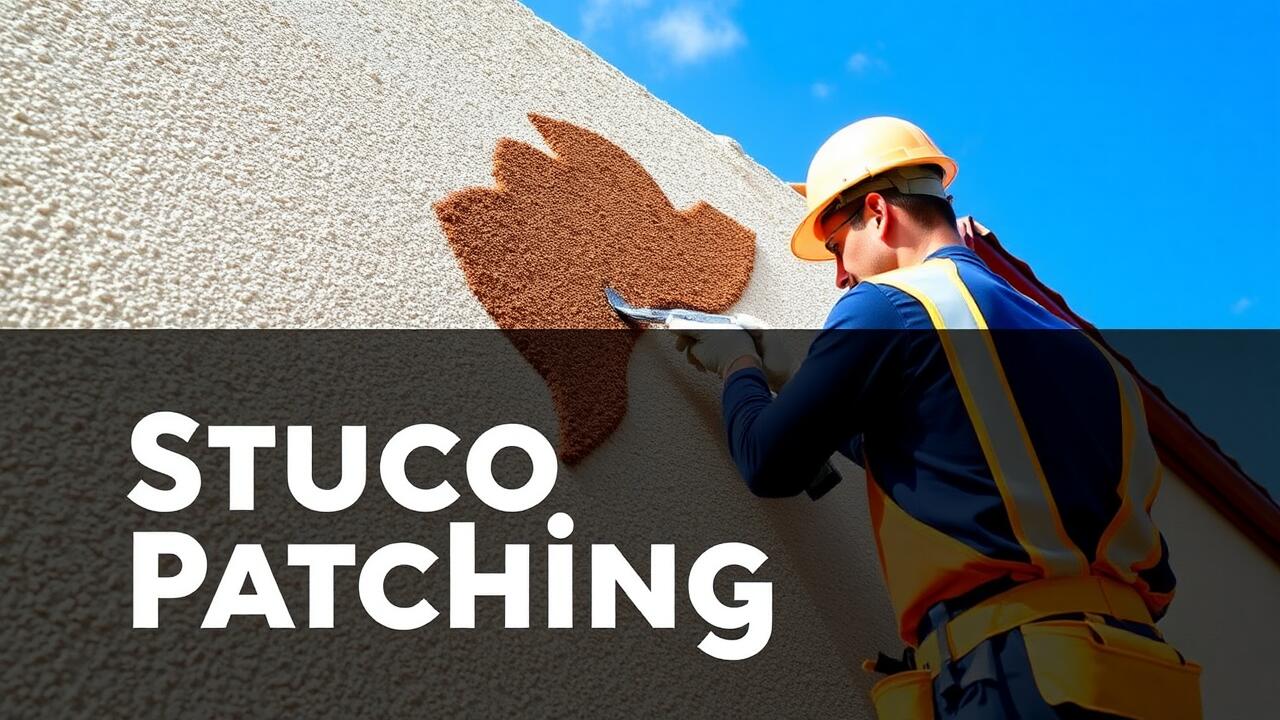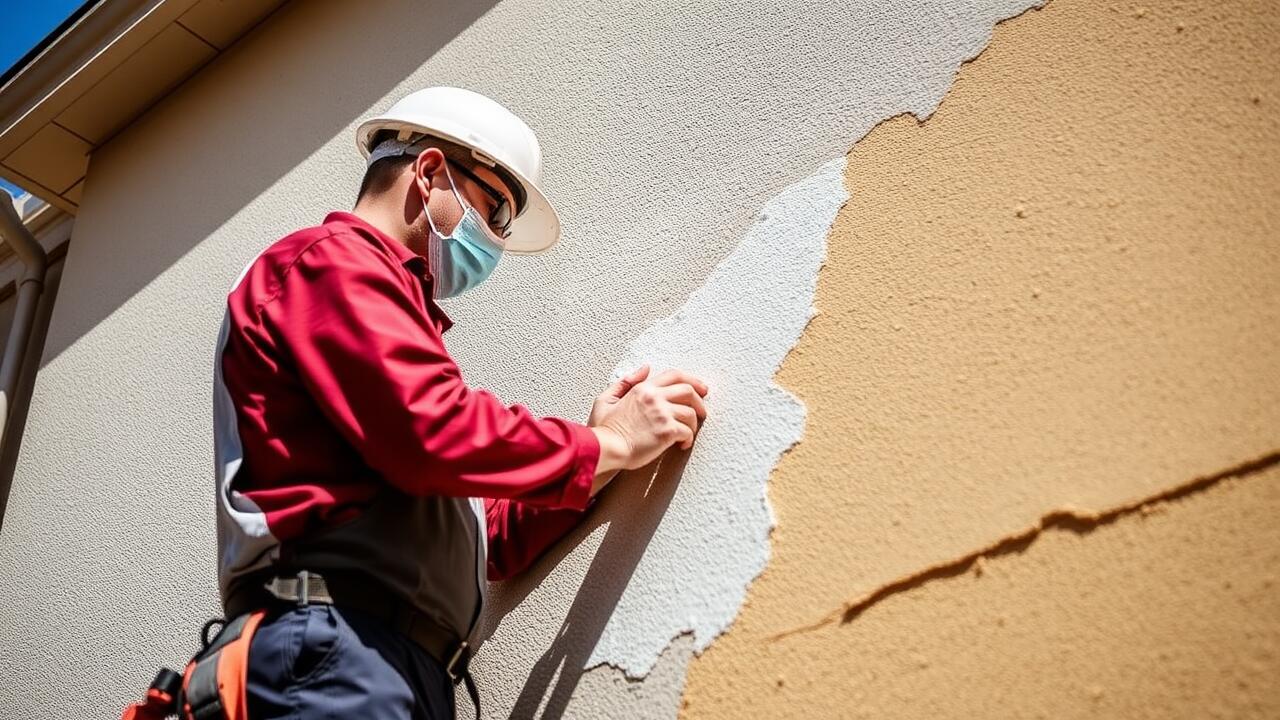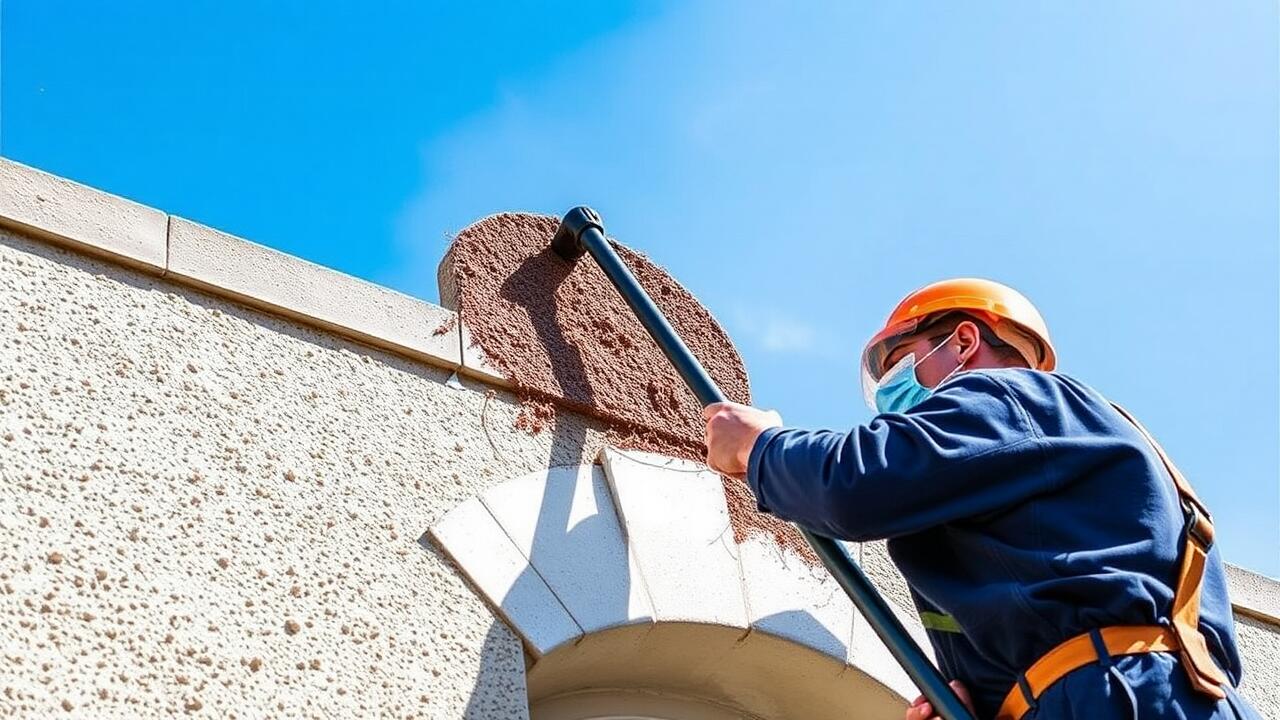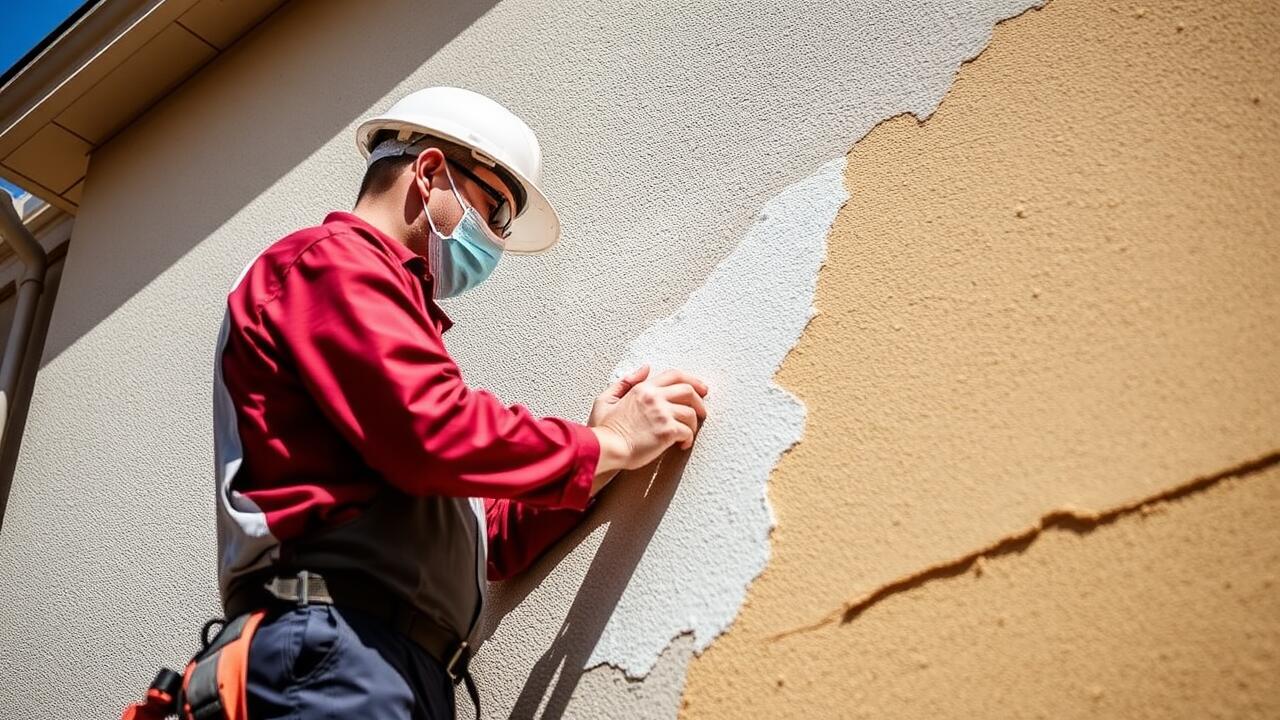
Mixing Quikrete for Best Results
Mixing Quikrete for stucco repair requires careful attention to ratios and consistency. Start by measuring the appropriate amount of Quikrete patching compound, usually guided by the size of the area needing repair. Gradually add clean water to the dry mix while continuously stirring. Aim for a mortar-like consistency, ensuring the mixture is neither too thick nor too runny. This balance will help achieve an effective bond with the existing stucco surface.
Once the Quikrete is adequately mixed, it's vital to allow it to rest for a few minutes before application. This short period lets the materials hydrate fully, enhancing their performance. If you need assistance with such projects, look into services like Stucco Patching Van Nuys, Los Angeles. They provide expertise in mixing and applying patching materials, ensuring a professional finish that blends seamlessly with the existing stucco.
Proper Mixing Techniques
To achieve the best results for your stucco repair, proper mixing of Quikrete is critical. Begin by following the manufacturer’s instructions carefully. Use clean, potable water and a suitable mixing container to ensure an even consistency. For small patches, a hand mixer or a trowel can suffice. For larger projects, a paddle mixer will help achieve a uniform blend. Aim for a consistency similar to that of thick pancake batter, as this will help facilitate application without compromising the bonding properties.
When undertaking stucco patching projects, like those in Stucco Patching Canoga Park, Los Angeles, attention to detail in mixing can make a significant difference. Mix Quikrete only in quantities that can be used within its workable time frame, typically 30 to 40 minutes. This will help prevent any waste and ensure that the patch adheres properly when it is applied. Maintaining the right mixture helps avoid issues such as cracking or peeling after the repair is completed.
Applying Quikrete to Stucco
Applying Quikrete to stucco requires careful attention to detail to ensure a proper bond and an even finish. Begin by cleaning the area around the repair, removing any loose debris, and dampening the existing stucco with water. This step prevents the absorption of moisture from the Quikrete, which can hinder the curing process. Using a trowel, apply the mixed Quikrete to the damaged area in a manner that matches the texture of the surrounding stucco. Work in small sections to maintain control over the application and texture.
After applying Quikrete, it is important to texture the surface to blend seamlessly with the existing stucco. Experts recommend using a sponge or a brush to create the desired look. For those in need of professional assistance, companies like Stucco Patching Palms, Los Angeles, offer specialized services for stucco repairs. Ensuring that the texture matches can greatly enhance the overall aesthetic of the wall. Continue to monitor the applied Quikrete as it begins to set, making adjustments to the texture as necessary to achieve a smooth finish.
Tips for a Smooth Finish
Achieving a smooth finish when applying Quikrete to stucco requires attention to detail and the right techniques. First, ensure the surface of the stucco is clean and free from dust or debris. Using a damp sponge or a misting spray can help keep the area moist and create better adhesion. When applying the Quikrete, use a trowel to spread it evenly, working in small sections to maintain control. Careful smoothing and feathering the edges will blend the repair with the existing stucco seamlessly.
After applying the Quikrete, it is essential to finish the surface properly. A float can help achieve a uniform texture that matches the surrounding stucco. Lightly tapping or swirling the float in a circular motion on the surface can help create a more natural look. For those seeking expert assistance, consider professionals offering Stucco Patching Sherman Oaks, Los Angeles, to ensure the best results in your repair projects. They can provide advice on the right techniques and proper finishing touches for a durable and aesthetically pleasing outcome.
Curing Time for Quikrete on Stucco
Curing time is a crucial factor in ensuring that Quikrete adheres properly to stucco surfaces. Generally, it takes around 24 to 48 hours for Quikrete to cure sufficiently for light use. However, the complete curing process can extend up to three days or longer, depending on environmental conditions like temperature and humidity. Cooler temperatures can slow down the curing process, while higher humidity levels may accelerate it. For those engaged in Stucco Patching Los Feliz, Los Angeles, understanding these variables is key to achieving optimal results.
Monitoring the curing process is essential for achieving a strong bond between the Quikrete and the stucco. Avoid exposing the newly patched area to direct sunlight or extreme weather conditions during the initial curing phase. Mist the surface with water periodically to aid in moisture retention, which can enhance the curing process. For residents in Los Feliz, proper curing techniques can greatly affect the durability and appearance of the stucco repair.
Factors Affecting Curing
Curing time for Quikrete applied to stucco can vary based on several factors. Temperature plays a significant role; warmer temperatures generally speed up the curing process, while cooler conditions can extend the time required for the Quikrete to set properly. Humidity levels also influence curing; high humidity can lead to slower drying times, while very dry conditions might cause the surface to cure too quickly, risking cracks or improper bonding.
Additionally, the thickness of the application affects how long it takes for the Quikrete to cure completely. A thicker patch will require a longer drying period compared to a thinner application. When planning a project like stucco patching in Sherman Oaks, Los Angeles, it's essential to account for these variables to ensure optimal results and longevity of the repair work.
FAQS
Can Quikrete be used for all types of stucco repairs?
Quikrete is suitable for patching most types of stucco, but it's best to check the specific product recommendations to ensure compatibility with your particular stucco finish.
How do I prepare the area before applying Quikrete to stucco?
Clean the area thoroughly to remove any loose material, dust, or debris. Ensure the surface is damp but not soaking wet before applying the Quikrete for better adhesion.
How long does it take for Quikrete to cure on stucco?
Curing time can vary based on factors like temperature and humidity, but generally, Quikrete should be allowed to cure for at least 24 to 48 hours before exposing it to moisture or heavy stress.
What should I do if I notice cracks in my stucco after patching with Quikrete?
If cracks appear after patching, ensure that the area was properly mixed and applied. If cracks persist, it may be necessary to re-evaluate the underlying issues and consider additional repair methods or consult a professional.
Can I paint over Quikrete once it has cured on stucco?
Yes, you can paint over cured Quikrete. Just make sure the surface is clean and dry, and use a paint that is compatible with both stucco and Quikrete for the best results.
